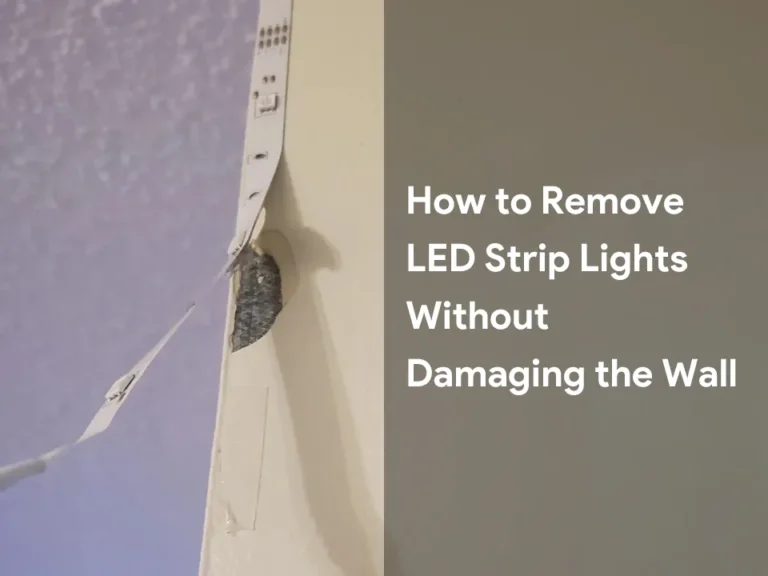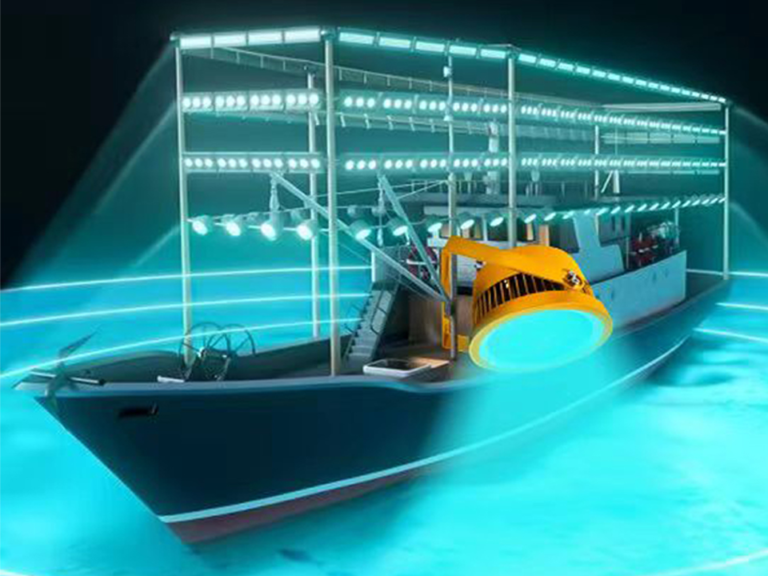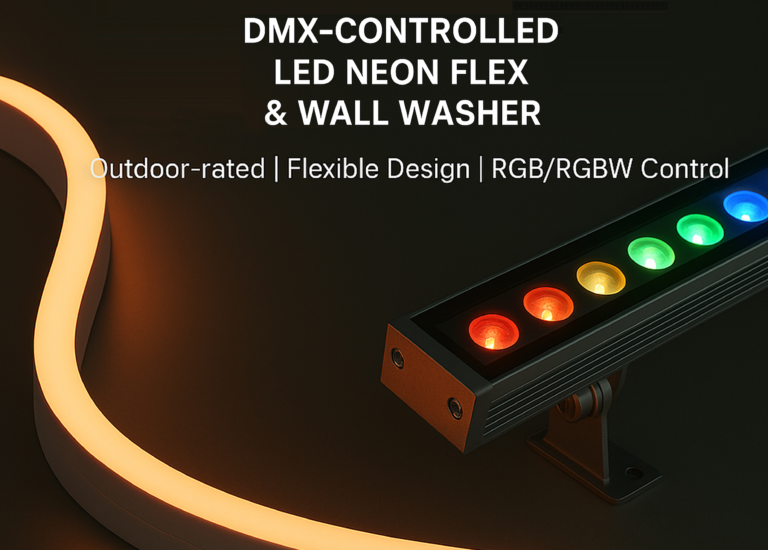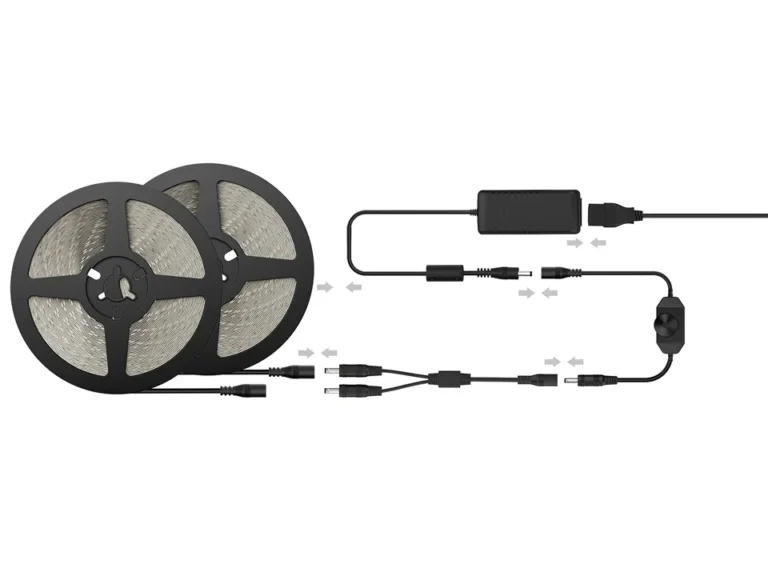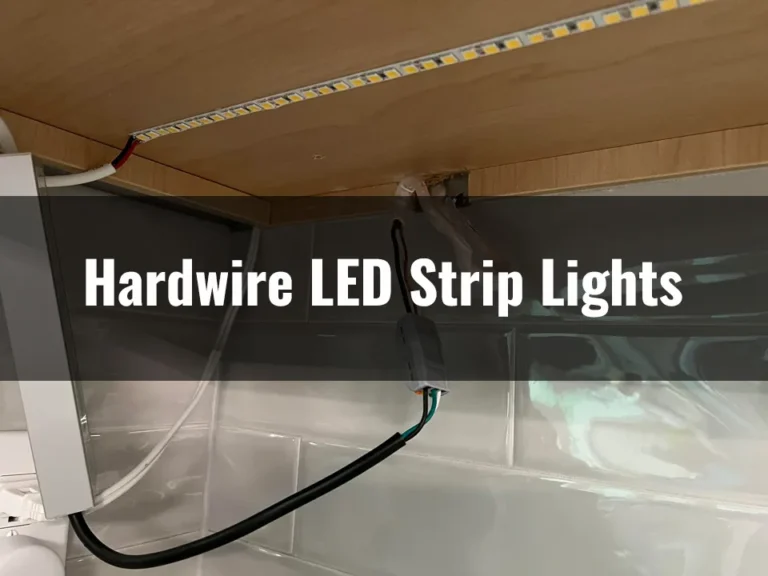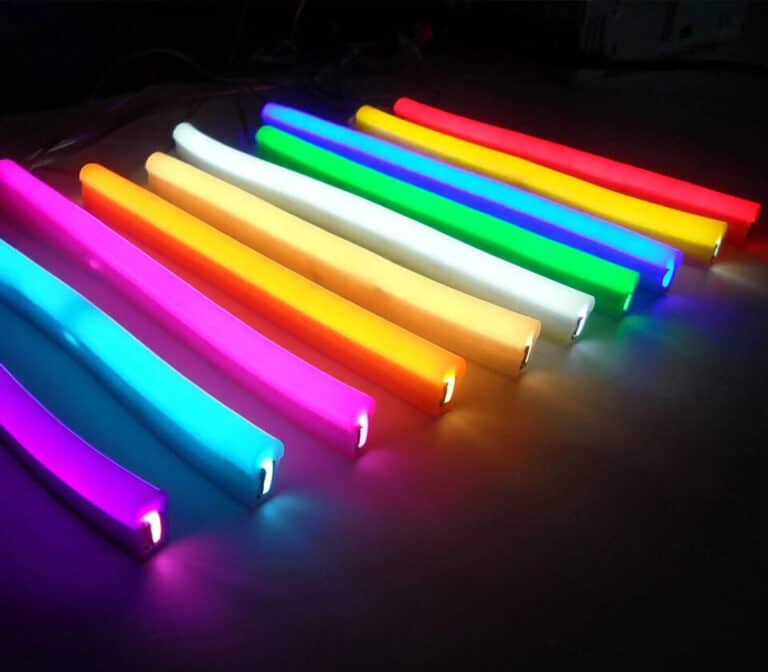Imagine entrar em um escritório ou shopping e se sentir instantaneamente confortável - graças às luzes lineares LED antirreflexo de baixo UGR - não apertando os olhos diante das luzes ásperas, não se distraindo com reflexos gritantes.
Nos espaços comerciais de hoje, a iluminação não é mais apenas um brilho. Com pouca iluminação LED UGR (UGR ≤ 19), o brilho é minimizado e os olhos ficam mais felizes – quer você esteja trabalhando em um relatório, navegando por produtos ou participando de uma palestra. Trata-se de criar um ambiente onde as pessoas possam se concentrar, fazer compras ou estudar sem fadiga visual.
Essas luzes são cuidadosamente projetadas com componentes ópticos inteligentes, como difusores, lentes e persianas em favos de mel, para garantir que a luz se espalhe uniformemente sem picos agressivos. O resultado? Um ambiente de iluminação comercial confortável que aumenta a produtividade, melhora a experiência do cliente e eleva a estética geral do espaço.
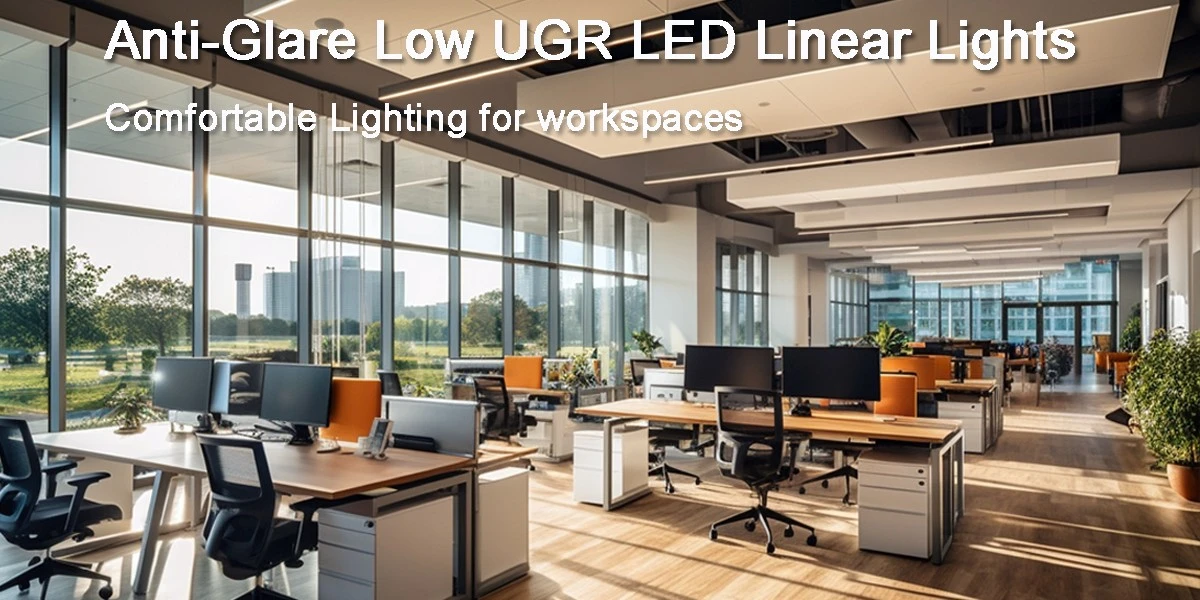
O que é a UGR e por que importa no design de iluminação?
O que é UGR?
A UGN Unified Glare Rating (UGR) é uma métrica padronizada desenvolvida pela CIE (Comissão Internacional de Iluminação) para quantificar o desconforto visual causado pelo brilho em ambientes de iluminação interna. O UGR fornece um valor numérico que indica a probabilidade de uma fonte de luz causar desconforto quando vista de uma posição normal.
Os valores da UGR variam de 5 (ofuscamento muito baixo) a 40 (ofuscamento extremamente alto). Para espaços comerciais, como escritórios, escolas e ambientes de varejo, a manutenção de uma UGR abaixo de 19 geralmente é recomendada para garantir uma experiência visual confortável.
Referência de classificação UGR
| valor ugr | Nível de conforto | instrução |
| 10–19 | Bom | O brilho é aceitável na maioria dos espaços de trabalho |
| 20–22 | aceitável | O brilho pode ser perceptível, mas não excessivamente perturbador |
| 22–25 | limítrofe | O brilho pode ser desagradável |
| >25 | inaceitável | O brilho é muito desagradável |

Como o UGR é calculado?
A UGR não é uma propriedade fixa de uma luminária, mas depende da instalação de iluminação como um todo. Fatores que influenciam a UGR incluem:
Luminância das fontes de luz
- Luminância de fundo
- Posição do observador e ângulo de visão
- geometria do quarto
- Refletância da superfície
- Arranjo da luminária (espaçamento, altura, orientação)
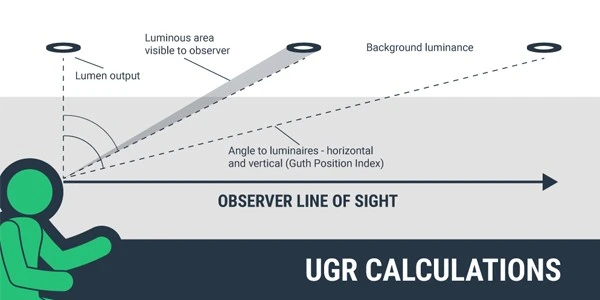
Na prática, softwares como Dialux, Relux ou AGI32 são comumente usados para simular esses parâmetros e calcular valores de UGR. De acordo com o “Método de Mesa UGR Trilux”, tamanhos padronizados de salas, valores de refletância de superfície e posições de observador são aplicados para tornar os resultados comparáveis em diferentes produtos.
Disposição padronizada do observador e do plano da luminária horizontal, posicionado em h = h – p – 1,2 (em metros) acima do nível do olho do observador para as posições sentadas, onde p representa o comprimento da suspensão da linha da luminária.
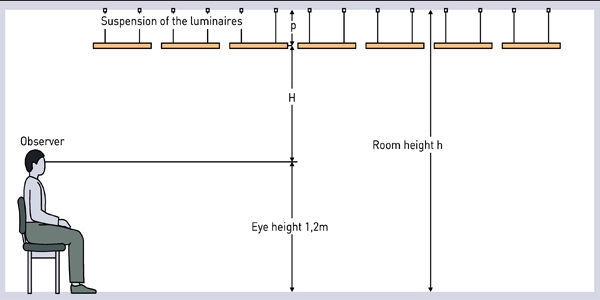
Para arranjos de luminárias estreitas (s = 0,25 h), o valor UGR permanece quase independente da posição de visualização do observador.
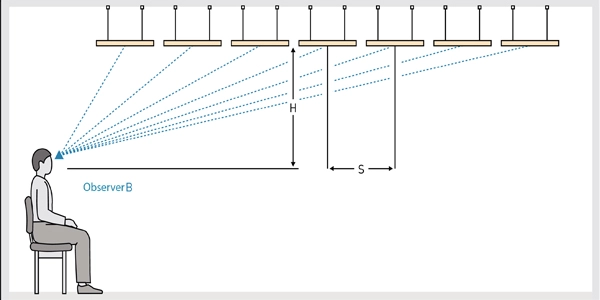
Com espaçamento mais amplo de luminárias, o Observer B1 experimenta uma UGR mais baixa, enquanto o Observer B2 vê uma UGR maior. No entanto, ambos os valores geralmente ficam abaixo do nível de UGR observado em arranjos de luminárias estreitas.
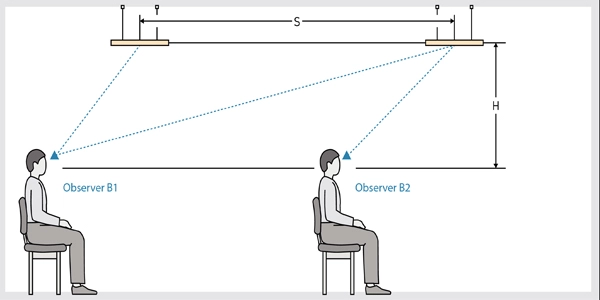
Nota: De acordo com a EN 12464-1, as tabelas UGR também podem ser baseadas em distâncias de luminárias superiores a S = 0,25 H. Por exemplo, na Grã-Bretanha, S = 1,0 h é comumente usado, o que resulta em valores de UGR mais baixos e maior eficiência de luminárias. No entanto, isso exige que os projetistas verifiquem cuidadosamente as posições do observador para evitar o brilho mais alto em determinados ângulos de visão.
Por que a UGR importa?
Aumentando o conforto visual
A baixa iluminação UGR reduz o brilho direto e os hotspots, minimizando o estresse visual durante atividades prolongadas, como trabalhar em um computador, ler ou assistir às aulas.
Apoiando a produtividade
O brilho bem controlado melhora a concentração e o desempenho. Estudos mostram que funcionários ou alunos em ambientes de baixo brilho mantêm o foco por mais tempo e experimentam menos fadiga.
Criando um ambiente profissional e convidativo
Em configurações de varejo ou hospitalidade, a iluminação de baixo brilho garante que produtos, telas e recursos arquitetônicos sejam claramente visíveis sem desconforto, melhorando a experiência do cliente.
Alcançando metas de UGR
Os fabricantes geralmente rotulam os produtos como “UGR<19”, mas isso não garante que a luz sozinha atinja a classificação. Em vez disso, indica que o design óptico da luminária (por exemplo, difusores, persianas, lentes) suporta o alvo quando instalado adequadamente em um ambiente adequado.
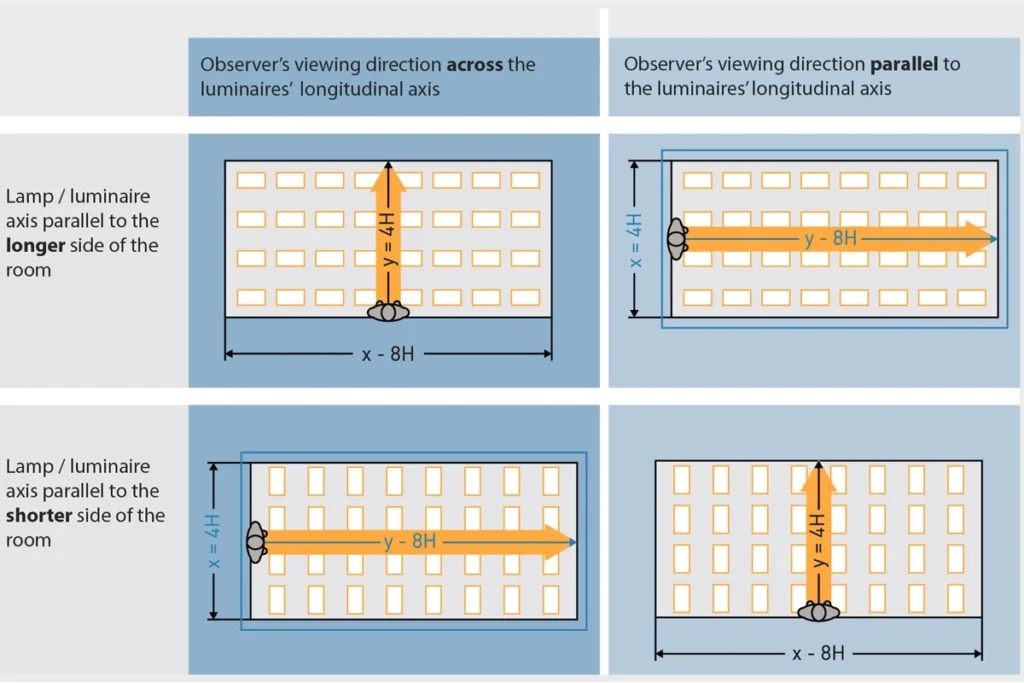
A direção de visualização do observador é mostrada em (esquerda) e paralela (direita) ao eixo da luminária, que pode ser alinhado com o lado mais longo (superior) ou mais curto (inferior) da sala. coordenadas x (através) e sim (Paralela) Indique as posições de exemplo, destacadas em azul e preto para maior clareza.
Características da luz linear LED UGR anti-reflexo com baixo nível de brilho
As luzes lineares LED de baixo UGR foram projetadas para reduzir o desconforto visual e criar espaços comerciais confortáveis. Seu desempenho é determinado não apenas pelos chips LED, mas também por componentes ópticos, design de caixa e distribuição precisa de luz.
Componentes óp
difusor
Objetivo: distribui uniformemente a luz, reduz os pontos de acesso e suaviza o brilho. Visitentestorgnteogbzyi distribui uniformemente a luz, reduz os pontos de acesso e suaviza o brilho.
tipos: difusores de PMMA/PC microestruturados, superfícies foscas ou foscas.
lente
Objetivo: Controla o ângulo do feixe, garantindo que a luz seja direcionada para o espaço de trabalho, evitando ofuscamento direto para os olhos.
tipos: lentes lineares, lentes de PC de nível ótico.
veneziana
Objetivo: Protege a luz direta da linha de visão, minimizando o brilho enquanto mantém o brilho nas superfícies de trabalho.
Material e design: alumínio ou plástico; tamanho, profundidade e espaçamento das células afetam diretamente a UGR.
refletor
Objetivo: Otimiza a distribuição de luz, reduz as zonas de alta luminância e evita o brilho direto.
Material: Superfícies revestidas de alumínio ou de alta reflexividade.
chip e caixa de led
chip led alto cri
Garante a renderização de cores naturais (CRI>80 ou 90), reduz a fadiga visual e funciona sinergicamente com componentes ópticos para aumentar o conforto.
projeto da habitação
Os designs de ranhura ou bordas blindadas reduzem o brilho direto visto pelos ocupantes. A profundidade da leve calha e a geometria da luminária desempenham um papel fundamental na redução da UGR.
Integração e distribuição de luz
A combinação dos componentes acima permite o controle preciso da direção e intensidade da luz, garantindo iluminação uniforme nas superfícies de trabalho, mantendo o valor da UGR baixo.
Os designers podem alcançar UGR<19 em instalações típicas de escritório, educacional ou de varejo por meio de uma seleção cuidadosa de difusores, lentes e geometria do alojamento.
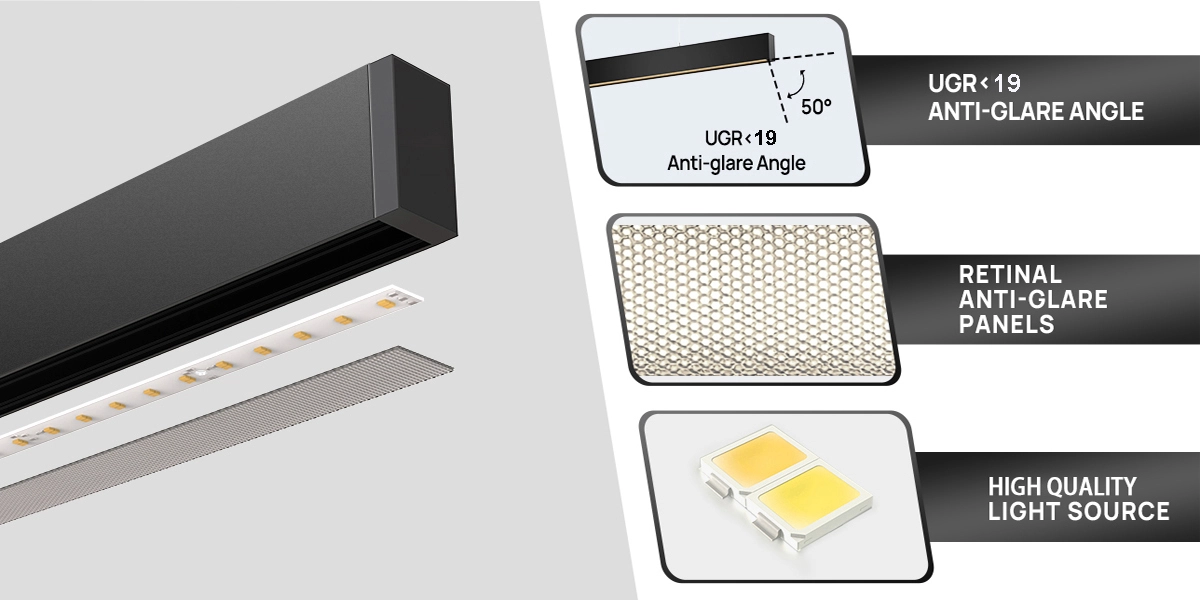
Aplicações de luz linear LED UGR baixa
As luzes lineares com LED UGR são amplamente utilizadas em espaços comerciais e institucionais modernos, onde o conforto visual é uma prioridade. Ao minimizar o brilho, eles ajudam a criar ambientes produtivos, acolhedores e esteticamente agradáveis.
Iluminação de escritório
Em escritórios de plano aberto, salas de reunião e espaços de coworking, a iluminação sem brilho reduz o cansaço visual e suporta longas horas de trabalho no computador. Manter a UGR<19 geralmente é um requisito de design em ambientes corporativos para cumprir os padrões internacionais de iluminação (por exemplo, EN12464).
shopping e shopping center
Os espaços de varejo se beneficiam da baixa iluminação UGR, pois fornece uma visibilidade clara do produto sem causar desconforto aos compradores. Luzes lineares com difusores antirreflexo ou persianas aprimoram a exibição de mercadorias, mantendo a experiência de compra confortável e convidativa.
instituições de ensino
Salas de aula, bibliotecas e salas de aula exigem iluminação que apóie a concentração e reduza a fadiga visual. As luzes lineares LED de baixo UGR ajudam os alunos e professores a se concentrarem, criando um ambiente ideal para aprender e ler.
Hospitalidade e espaços públicos
Em hotéis, lobbies, restaurantes e áreas de espera públicas, a iluminação deve equilibrar o conforto e a estética. Os acessórios lineares com baixo UGR evitam o desconforto para os hóspedes, aumentando os detalhes arquitetônicos, a sinalização e o ambiente interno.
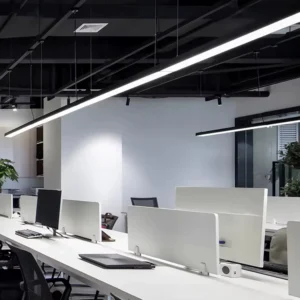
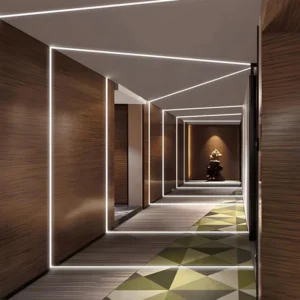
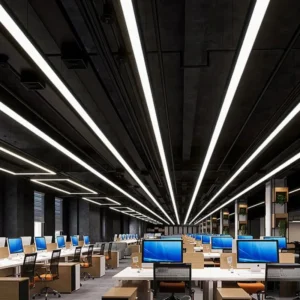
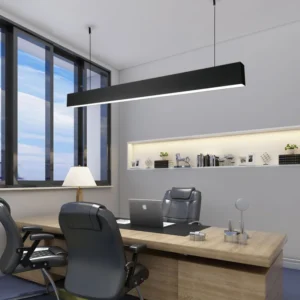
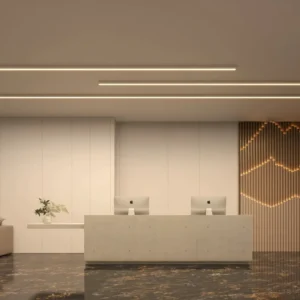
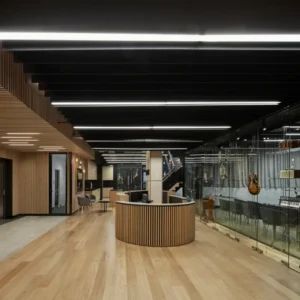
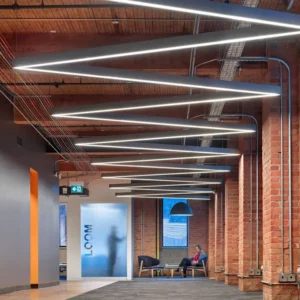
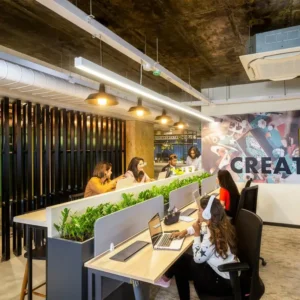
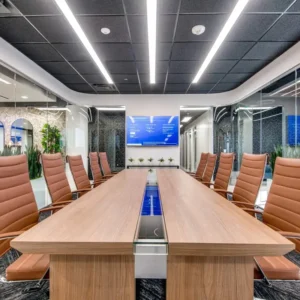
Comparação: luz linear baixa UGR versus iluminação convencional
Ao avaliar a iluminação para espaços comerciais, é importante comparar as luzes lineares de LED UGR com baixo nível de luminárias convencionais, como lâmpadas fluorescentes padrão, painéis de LED básicos ou luzes lineares não otimizadas. As diferenças destacam por que o controle de brilho é essencial no design moderno de iluminação.
Conforto visual
- Luz linear baixa UGR: Projetado com difusores, persianas ou refletores para reduzir o brilho, criando uma iluminação suave e equilibrada que minimiza o cansaço visual.
- Iluminação convencional: geralmente produz brilho direto ou pontos brilhantes visíveis, especialmente de tubos nus ou painéis de baixa qualidade, causando desconforto durante longas exposições.
Cumprimento de normas
- Baixa luz linear UGR: atende aos requisitos do EN12464, normas de construção de poços e diretrizes de iluminação LEED, especialmente o critério UGR<19 em escritórios e salas de aula.
- Iluminação convencional: pode não cumprir os requisitos modernos de brilho, tornando-o inadequado para projetos onde a certificação e o conforto visual são importantes.
Produtividade e experiência do usuário
- Baixa luz linear UGR: melhora o foco, reduz a fadiga e cria uma atmosfera agradável, apoiando diretamente a maior produtividade e satisfação do cliente.
- Iluminação convencional: pode causar desconforto ocular, dores de cabeça e concentração reduzida, afetando negativamente a eficiência do trabalho e a experiência do usuário.
Estética e integração arquitetônica
- Baixa luz linear UGR: oferece designs elegantes, saída de luz uniforme e brilho mínimo, melhorando a estética arquitetônica de escritórios modernos, varejo e espaços de hospitalidade.
- Iluminação convencional: designs desatualizados ou distribuição descontrolada de luz podem atrapalhar a estética interior e criar uma iluminação irregular.
Tabela de resumo
| Aspeto | luz linear baixa ugr | iluminação convencional |
| Controle de brilho | UGR<19, confortável | Freqüentemente >22, perceptível ou áspero |
| normas | Atende EN12464, bem, LEED | Requisitos de falha podem |
| Conforto visual | Suave, equilibrado, amigável aos olhos | Duro, causa tensão |
| produtividade | Melhora o foco e o bem-estar | Reduz o foco, pode causar fadiga |
| Estética | Ajuste moderno, limpo e arquitetônico | Leve, look desactualizado |
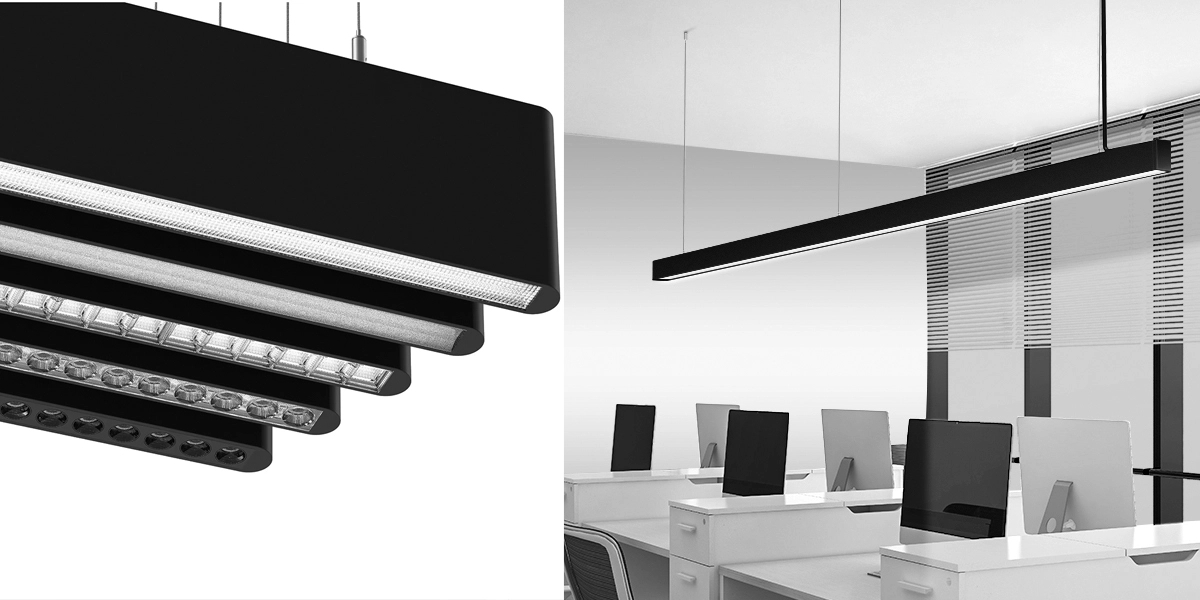
Tamanho do perfil: W25*H85mm
Comprimento opcional: 1200/1500/1800/2400 mm
Temperatura da cor (CCT): 3000K/4000K/6000K/CCT
Eficiência luminosa da lâmpada (LM/W): 100 lm/w
Potência: 40W/50W/60W/80W
Índice de renderização de cores (RA): >80, >90
Tipo de fonte de luz: LED SMD2835
Dimming disponível: não escurecido/ 0-10V/Dali escurecimento
Material principal: alumínio + PC / PMMA / difusor prismático
Cor da concha: preto/branco/prate
Instalação: suspenso/superfície/montagem na parede
Como selecionar a lista de verificação linear LED e baixa UGR certas certas
Ao escolher a iluminação linear antirreflexo para escritórios, escolas, varejo ou projetos de hospitalidade, não basta olhar para as folhas de dados do produto. Os compradores devem verificar se os acessórios realmente atendem aos requisitos de desempenho e conformidade. As diretrizes a seguir transformam as características técnicas em verificações práticas de compras.
Verifique os relatórios do teste UGR
- Solicite dados oficiais do teste UGR do fornecedor, não apenas em reivindicações de marketing.
- Confirme se os valores são testados em condições EN 12464-1 (por exemplo, UGR ≤19 para escritórios/salas de aula).
Solicite amostras para avaliação no local
- Verifique o controle do brilho, a uniformidade da luz e o conforto em um ambiente de projeto real.
- Coloque as luminárias nas alturas de montagem pretendidas para simular o efeito final.
Confirme a certificação e a conformidade
- Procure por CE, RoHS, UL e EN 12464-1 compliance.
- A certificação garante segurança, qualidade e adequação às licitações internacionais.
Avalie a flexibilidade do projeto
- O fabricante oferece comprimentos personalizados, CCT ajustável ou controle inteligente (DALI/DMX)?
- A flexibilidade garante que a iluminação possa se adaptar aos requisitos em evolução do projeto.
Verifique a garantia e o suporte pós-venda
- Recomenda-se uma garantia mínima de 3 a 5 anos.
- Serviço confiável pós-venda reduz riscos em projetos de longo prazo.
Lista de verificação do comprador
| Critérios | O que verificar |
| Classificação UGR | Solicitar relatório testado, escritórios/salas de aula ≤19, indústria ≤16 |
| Avaliação da amostra | Verifique o controle do brilho, uniformidade e conforto no espaço real |
| Certificação | EN 12464-1, CE, RoHS, UL ou aprovações locais |
| Flexibilidade | Comprimentos personalizados, CCT ajustável, opções DALI/DMX |
| Garantia e serviço | Garantia de 3 a 5 anos, suporte confiável após a venda |
Conclusão
As luzes lineares com LED UGR baixo representam um avanço significativo na iluminação comercial e institucional, oferecendo uma combinação equilibrada de conforto visual, eficiência energética e flexibilidade de design. Ao entender o conceito de UGR e selecionar acessórios com componentes ópticos bem projetados, os compradores podem criar ambientes que reduzam o brilho, melhorem a produtividade e proporcionem uma experiência agradável para os ocupantes. De escritórios e salas de aula a espaços de varejo e ambientes de hospitalidade, a baixa iluminação UGR é cada vez mais reconhecida como um padrão para iluminação moderna e centrada no ser humano.
